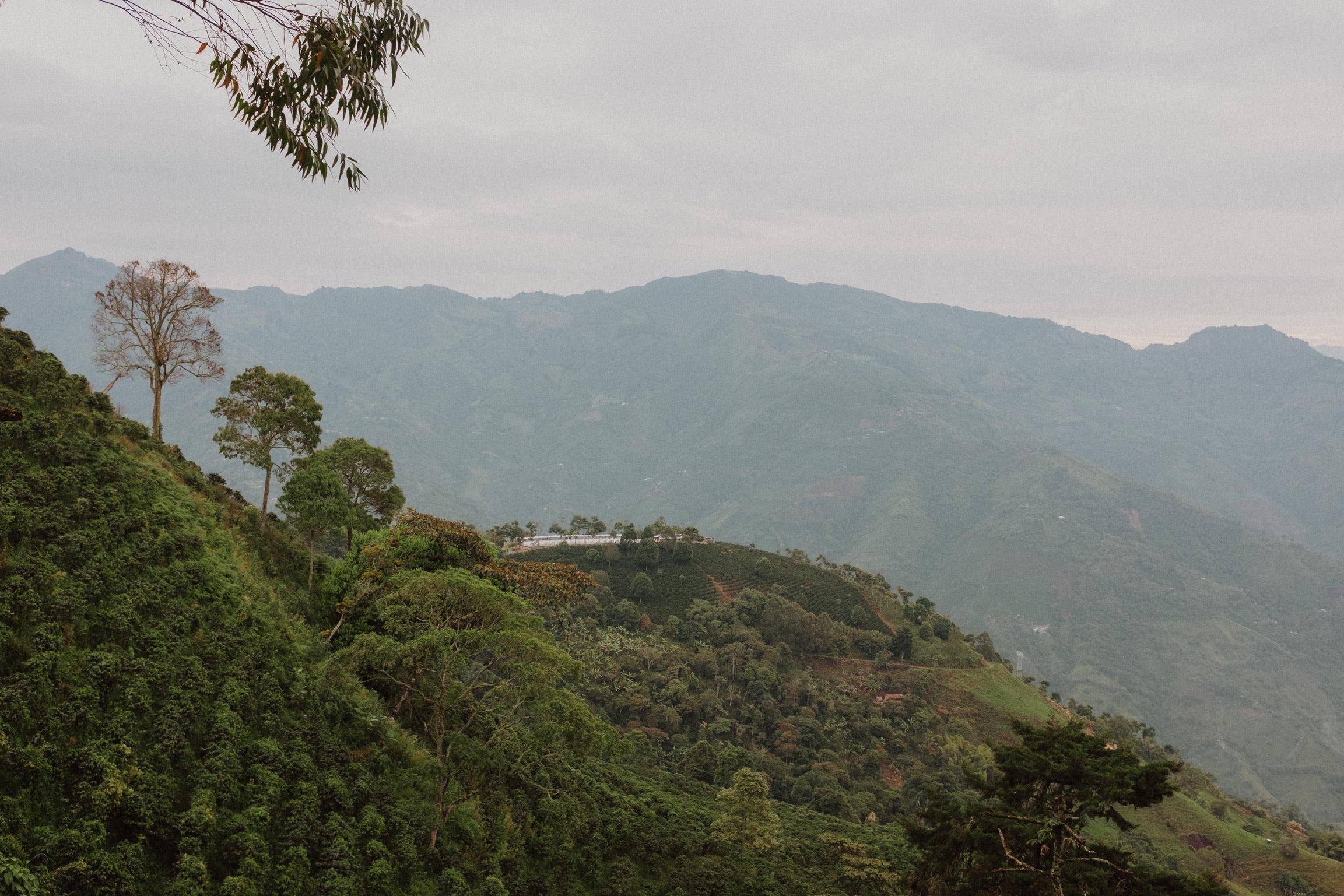
Brewing methods

Chemex
Theory:
Part of the family of drip methods, Chemex extraction passes hot water through the grounds, extracting soluble solids with the help of gravity. The paper filter gives the final product a cleanness and sweetness, since it does not let many coffee particles pass through.
Brew:
Chemex brewing involves many steps, and uses 32 g of coffee per 400 ml of water.
• First, place the filter in the Chemex. The side with the 3 flaps of excess paper should be aligned with the Chemex’s nozzle.
• Next, wet the filter with hot water to preheat it, dilate the fiber, and remove any possible paper flavor.
• Then add the 32 g of medium grind coffee, and dampen with a pre-infusion of 64 ml of water (pre-infusion helps to moisten the grounds for a more homogeneous extraction).
• Set a stopwatch. After about 50 seconds, slowly add 250 ml of water, pouring in a smooth circular pattern to create the proper turbulence, and wait until about 2 minutes on the clock for the extraction to take place
• Add the remaining 150 ml of water, slowly generating turbulence, and wait until about 3 minutes or 3:30 for the drink to finish filtering. Remove the filter and serve the drink.
Tip: You can change 150 ml of water with 150 g of ice, resulting in a cold coffee!
Chemex was invented by a German chemist named Peter J. Schlumbohm. While living in New York, he was frustrated by the bad coffee served in cafes and restaurants, brewed in automated coffeemakers without any charisma or design. Determined to find a better way, he invented Chemex, a simple and elegant design that produces an excellent cup of coffee — but requires considerable time and expert hands.

French press
Theory:
French Press extraction works by steeping. Coffee grounds are emerged directly in hot water, extracting the soluble solids, then plunged to the bottom of the French Press by a piston with a metal filter at the base. Unlike the fine paper used in the Chemex, the metal filter allows more fine particles of coffee and other oils to pass through, bringing out stronger flavors and more body.
Brew:
The press uses 18 g of coffee per 240 ml of water.
• First, add coarse grind coffee to the press..
• Add 50 ml of water to bloom the coffee, and wait 30 seconds..
• Then add the remaining 190 ml of water to the coffee, creating circular turbulence.
• Let stand for 4 minutes from the time you pour the first drop of water.
• After the 4 minutes, lower the piston gently and serve the drink.
An early form of the French press may have first originated in France — but was refined and patented in Italy by the Milanese designer Attilio Calimani. A French clarinet factory began producing the device in 1958, marking the beginning of its steady spread throughout Europe.

Aeropress
Theory:
Combining the piston of the French Press with the paper filter of the Chemex, the Aeropress harnesses air pressure to make coffee with more oils and less sediment in record time.
Brew:
Combining the piston of the French Press with the paper filter of the Chemex, the Aeropress harnesses air pressure to make coffee with more oils and less sediment in record time.
• The first step is to add 22 g of coffee (medium-fine grind) to the Aeropress.
• Then add 100 ml of water to bloom the grounds, and let sit for 40 seconds.
• Stir 3 times in a circular pattern to create turbulence.
• Add the remaining 140 ml of water and let sit for 2 minutes from the time you add the first drop of water.
• Stir again 3 times, smoothly.
• Place a moistened filter in the filter holder, and flip the Aeropress, placing it on the rim of a coffee cup.
• Press down on the piston to fully filter the drink into the cup.
This American-designed method was first launched on the market in 2006. Handy, portable, lightweight, and power-free, the Aeropress quickly gained a loyal following among coffee enthusiasts.

Siphon
Theory:
The siphon method uses a vacuum to filter out coffee grounds. Water in the lower chamber of the siphon is heated until it boils and rises into the upper chamber, where it comes in contact with the grounds. The coffee is extracted for a short period of time in the upper chamber, until the heat source is removed, and the liquid sucked back down into the lower chamber, leaving behind the grounds. This is the only method in which coffee is extracted at boiling point.
Brew:
The siphon uses 30 g of coffee per 400 ml of water.
• Add hot water to the spherical chamber of the siphon and turn on the burner or electric heat source.
• Wait until the water starts to boil and seal o the chamber. When all of the water has risen into the upper chamber, add the coffee. Wait 2 minutes and 30 seconds.
• Remove the heat source, let the drink filter, and serve.
The first siphon was patented in Germany by Loe of Berlin. It has since seen particularly popularity in Japan.
Seguir Leyendo
-

01. Introduction
See moreWe are privileged to work in every stage of the coffee process — from farm to cup.
-

02. What are specialty coffees?
See moreWe’ll begin by defining specialty coffees — and what differentiates them from lower-quality beans.
-

03. Describing coffee
See moreCoffee is like wine. There’s the gas-station kind that taste like sludge, the critically-acclaimed kind that experts and hipsters alike hail as tasting like bouquets of flowers — and everything in between.
-

04. Agronomy
See moreThe process begins with a seed (the coffee bean itself) planted in sand, where it germinates into a small seedling called a “chapola.” After 3 months, the seedling is transplanted into a small bag, and continues to grow until it is strong enough to be planted in the field.
-

05. Farm processing
See moreRemember that the coffee we consume is the roasted seed of a fruit. The fruit begins its process of transformation when it is picked from the tree. Unlike other fruits (such as banana, avocado, mango, etc.), coffee can’t be picked while it is still green. It must be harvested at the perfect point of ripeness, when the cherry has fully matured.
-

06. Roasting
See moreAt Pergamino, we are artisanal roasters. is means several things. First, that we roast in small batches under the careful oversight of a master roaster. We analyze each batch of green coffee in depth in order to determine the ideal roasting curve for its density, profile and final destination.
-

07. Species of trees
See moreAt Pergamino, we are artisanal roasters. is means several things. First, that we roast in small batches under the careful oversight of a master roaster. We analyze each batch of green coffee in depth in order to determine the ideal roasting curve for its density, profile and final destination.
-

08. Extraction theory
See moreAs you can see, behind each cup of coffee is a world of complexity — meaning that we have a huge responsibility at the moment of the final brew. At Pergamino, we are very proud of our team of baristas, who assume this responsibility with great professionalism. They receive constant training, not only in the preparation of our drinks, but in the entire backstory of our coffees, and how to pass on their unique stories to our customers. But do not worry — with a little discipline and curiosity, you, too, can learn to make excellent coffee at home!
-

09. Preparation of filtered coffee
See moreBefore going into detail about brewing, we’d like to cover the core principles of coffee extraction. Brewing coffee is always a delicate game — balancing the quantity of coffee, the quantity of water, the type of grind, and the extraction time. Depending on the method, these factors can be varied in order to highlight specific attributes of a coffee.
-

10. History
See moreCoffee’s global voyage began in the lush highlands of Ethiopia, the original motherland of the Coffea Arabica plant. The earliest known writing on the coffee plant, dating to the 10th century, characterizes it as a medicine—prepared as an infusion of coffee cherries in hot water.
-

11. The Allied Farmers Project
See moreLike all small, medium and large producers in Colombia, Pergamino spent many years helplessly riding the roller coaster of international coffee prices. We had to invest in our crops without knowing what they would sell for during their 12-year production cycle.
-

12. Dreams of the future
See moreWe dare to share with you a dream that we have for the future. Colombian coffee has changed a lot in the last 80 years, shifting towards more technical, large-scale cultivation — with widespread use of chemical fertilizers, pesticides, monoculture, and complete exposure (without shade trees).
-

13. Brewing methods
See moreThese are our favorite methods and advices
-

Navidad (500g bag)
Allied producers across Colombia
Regular price $18.99Regular priceUnit price / per -

Special Edition, Gesha Convite (360g bag)
Inzá, Cauca
Regular price $26.99Regular priceUnit price / per -

Three-Origin Kit (500g bag) - 10% off
Allied producers across Colombia
Regular price $49.47Regular priceUnit price / per -

Lomaverde (500g bag)
Santa Bárbara, Antioquia
Regular price $16.99Regular priceUnit price / per




















